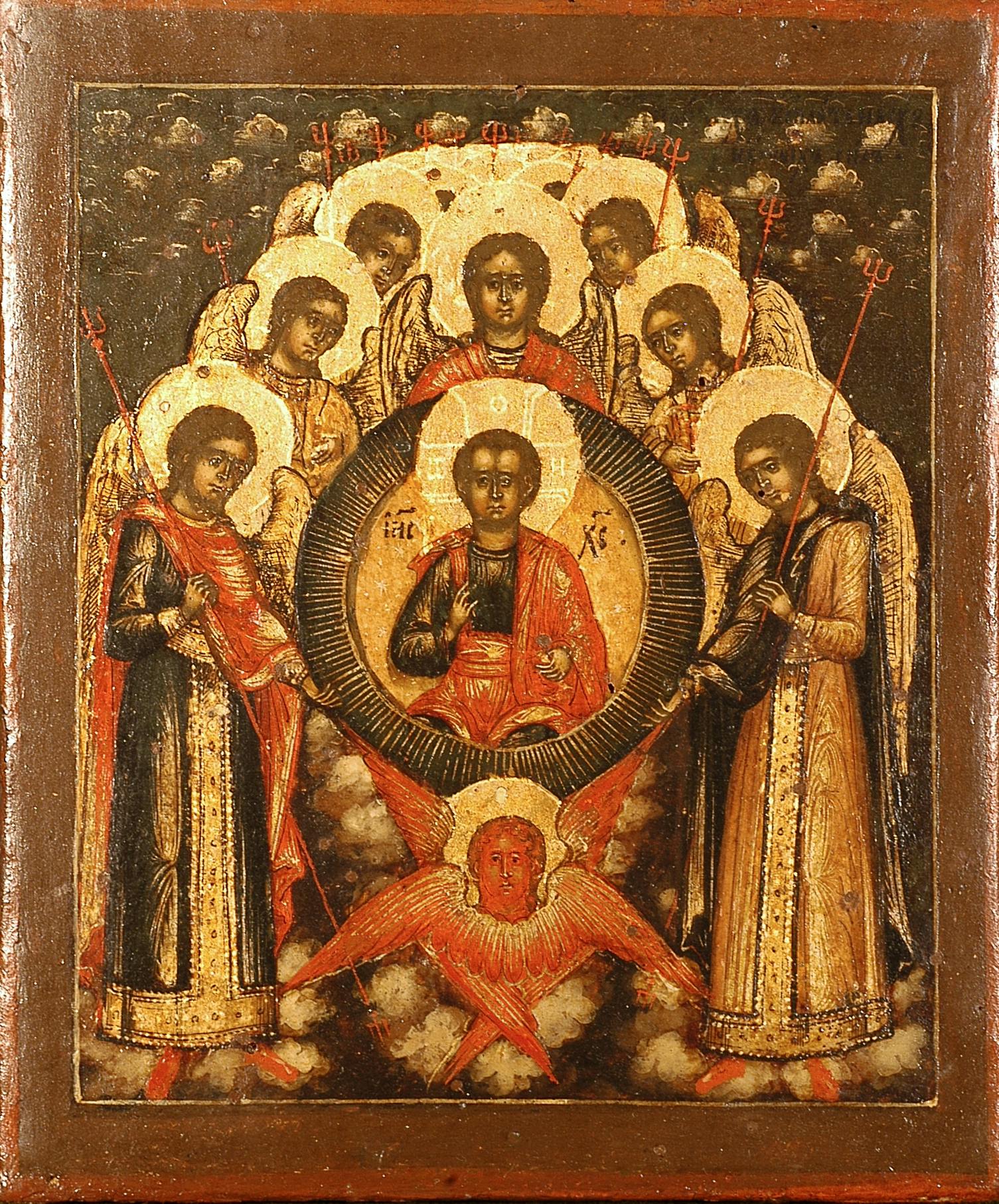The Synaxis of the Archangels
Central Russia
Within a medallion surrounded by seven archangels and held up by a seraph, canonically depicted with six flaming wings, is an effigy of the blessing Jesus Christ. The archangels, followed by a host of other angels whose halos can be glimpsed in the background, are depicted holding a red sceptre and wearing exquisite gold-threaded dalmatics, embellished with mantles and loros, a typical vestment of Byzantine origin. The iconography of angels lifting a medallion featuring the image of the Saviour, symbolic of Christ's glory, has been seen in Byzantine art since the 10th-11th centuries, while the first evidence of this subject in a Russian icon is found in a panel preserved at the Cathedral of St. Sophia in Novgorod, dating from the late 15th and early 16th centuries.
Nevertheless, the painting’s execution shows a certain simplification shared by this panel and other icons in the Uffizi originating from the Grand Duke of Lorraine Guardaroba and dating back to around the second quarter of the 18th century. The finesse in executing the robes and the volumetric rendering of the faces are commendable, originating in the pictorial tradition of workshops in the Kremlin Armoury Museum in Moscow.
